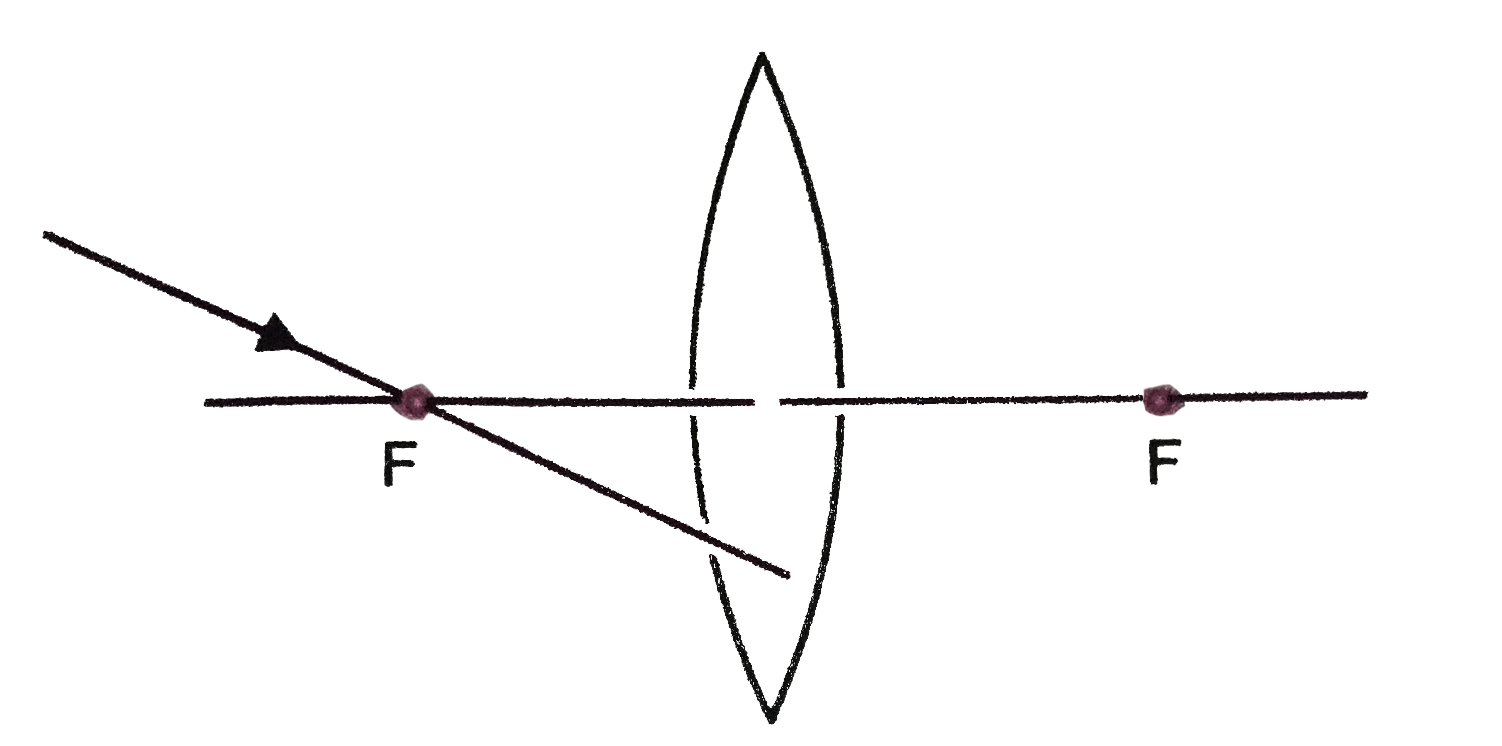When does a ray of light falling on a lens pass through it undeviated ?
To determine when a ray of light passes through a lens undeviated, we can follow these steps:
1. Understand the Lens Structure:
- A lens has two main parts: the optical center and the principal axis. The optical center is a specific point within the lens where light can pass through without bending.
2. Identify the Optical Center:
- The optical center of the lens is located on the principal axis. This is a straight line that runs through the center of the lens and is perpendicular to its surfaces.
3. Ray of Light Incident on the Lens:
- When a ray of light approaches the lens, its path can change depending on where it hits the lens.
4. Condition for Undeviated Ray:
- A ray of light will pass through the lens undeviated if it strikes the lens at the optical center. This means that it does not experience any refraction or bending.
5. Conclusion:
- Therefore, the ray of light passes through the lens undeviated when it travels through the optical center.
Final Answer:
A ray of light falling on a lens passes through it undeviated when it passes through the optical center of the lens, which lies on the principal axis.
---
- A lens has two main parts: the optical center and the principal axis. The optical center is a specific point within the lens where light can pass through without bending.
- The optical center of the lens is located on the principal axis. This is a straight line that runs through the center of the lens and is perpendicular to its surfaces.
- When a ray of light approaches the lens, its path can change depending on where it hits the lens.
- A ray of light will pass through the lens undeviated if it strikes the lens at the optical center. This means that it does not experience any refraction or bending.
- Therefore, the ray of light passes through the lens undeviated when it travels through the optical center.
A ray of light falling on a lens passes through it undeviated when it passes through the optical center of the lens, which lies on the principal axis.
Topper's Solved these Questions
- SAMPLE PAPER 2011BOOK - ICSECHAPTER - SAMPLE PAPER 2011EXERCISE - SECTION-II
41 Videos
- SAMPLE PAPER 2 (PHYSICAL EDUCATION)BOOK - ICSECHAPTER - SAMPLE PAPER 2 (PHYSICAL EDUCATION)EXERCISE - MULTIPLE CHOICE QUESTIONS
50 Videos
- SAMPLE PAPER 2012BOOK - ICSECHAPTER - SAMPLE PAPER 2012EXERCISE - SECTION-II
43 Videos
Similar Questions
A ray of light is falling on a glass sphere of μ=√3 such that the incident ray and the emergent ray, when produced, intersect at a point on the surface of the sphere. Find the value of angle of incidence.
View SolutionA converging lens L1 of focal length 20 cm is separated by 8 cm from a diverging lens L2 of focal length 30cm. A parallel beam of light falls on L1 after passing through L2 is focussed at point P. Calculate V.

View SolutionWhen a ray of light falls normally on a plane mirror. The angle of incidence will be
View SolutionWhat is lateral displacement ? Draw a ray diagram showing the lateral displacement of a ray of light when it passes through a parallel sides glass slab.
View SolutionIf a ray of light is allowed to pass through a quartz crystal, then the two refracted rays obtained are
View SolutionWhen a strong beam of light is passed through a colloidal solution, the light will:
View SolutionDraw a neat and labelled diagram, when a ray of white light passes through an equilateral prism.
View SolutionWhich of the following solar radiations pass through the atmosphere of earth ?
X-rays, ultraviolet rays, visible light rays, infrared radiation.
View SolutionThe angle of a prism is 60∘ and its refractive index is √2. The angle of minumum deviation sufferred by a ray of light in passing through it is
View SolutionWhich of the following ray diagrams is correct for the ray of light incident on a lens shown in Fig. ? Choices are given in Fig.

View Solution
